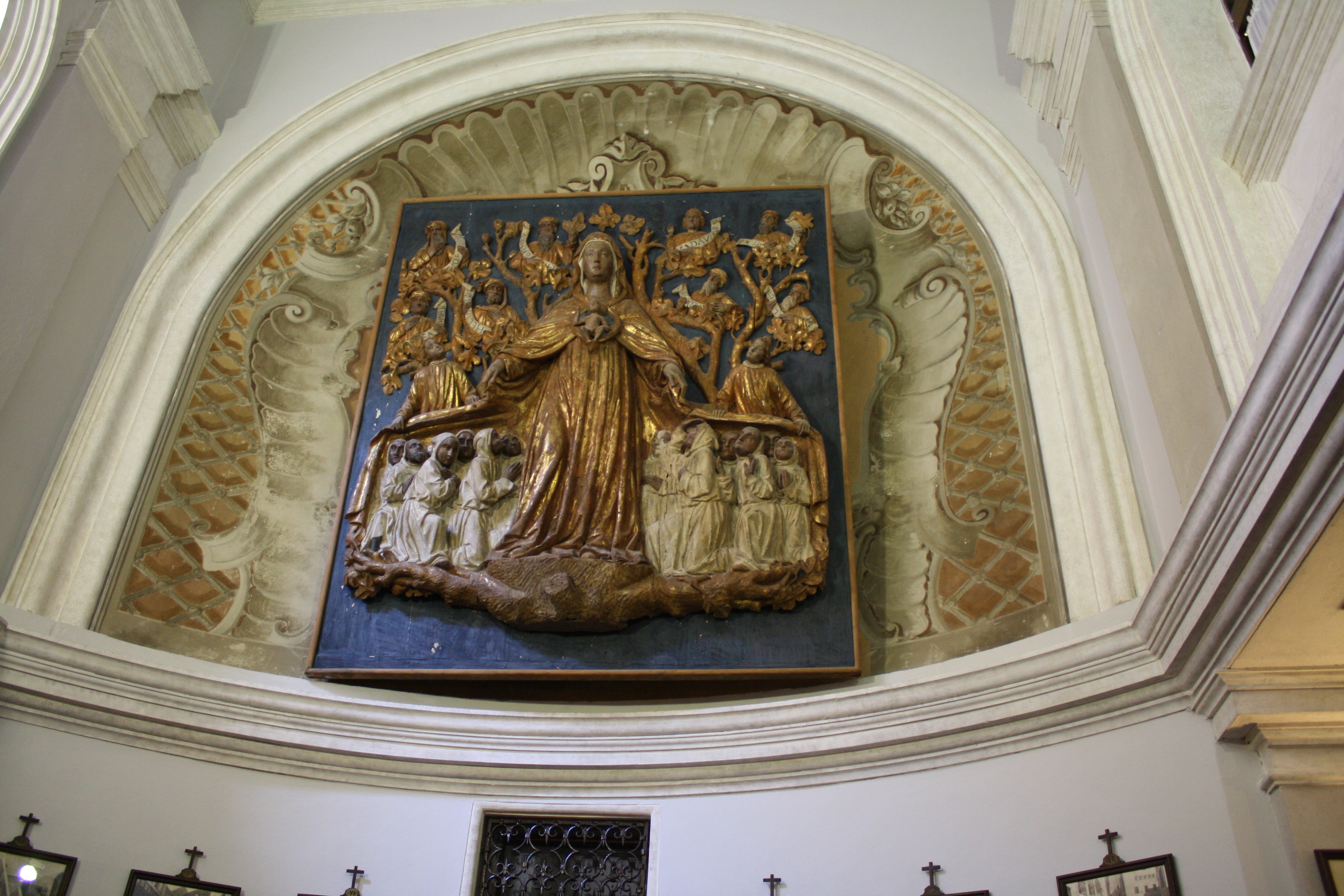
I stumbled upon the Madonna
della Misericordia in Carmel on a sunny
December morning in 2003. She was standing on a coffee
table at Brinton's, a
beautiful store now defunct. As I was leaving the store with a couple
of Christmas
ornaments in my hands, I was compelled by a strange force to go
back and take her home.
I didn't know her name, I wasn't even sure she was the Madonna, but I
was drawn to her beauty and the aura of tranquil protection she
radiated. According to the saleswoman she was, perhaps, the Madonna of
the Streets, as the people gathered under the folds of her cloak
suggested. A sticker placed at the bottom of the base revealed her
name: Mother of Mercy.
Later I realized that I had seen and photographed similar images all over the streets of Venice but hadn't noticed her. My next trip to Venice in September 2004 was in search of the Madonna della Misericordia. A pursuit that continues until now.
I know of thirty-two representations of the Madonna della Misericordia scattered all over Venice; a few are in churches and museums, tucked away from general view, but most are not; they are in the streets of Venice offering protection to passersby as they have been doing for centuries; all we have to do is lift our eyes.
Curiously, the locations on the map seem to delineate the contour of Mary's cloak, with her head at the Scuola Vecchia della Misericordia, where she once reigned over the main portal and where only a scar remains now. The relief was taken to London and placed at the Victoria and Albert Museum, where it can be admired today.
I am very grateful to Annie from Churches in Venice who has a very keen eye for the reliefs of the Madonna and spotted a few that were unknown to me and graciously shared her pictures with me.
Later I realized that I had seen and photographed similar images all over the streets of Venice but hadn't noticed her. My next trip to Venice in September 2004 was in search of the Madonna della Misericordia. A pursuit that continues until now.
I know of thirty-two representations of the Madonna della Misericordia scattered all over Venice; a few are in churches and museums, tucked away from general view, but most are not; they are in the streets of Venice offering protection to passersby as they have been doing for centuries; all we have to do is lift our eyes.
Curiously, the locations on the map seem to delineate the contour of Mary's cloak, with her head at the Scuola Vecchia della Misericordia, where she once reigned over the main portal and where only a scar remains now. The relief was taken to London and placed at the Victoria and Albert Museum, where it can be admired today.
I am very grateful to Annie from Churches in Venice who has a very keen eye for the reliefs of the Madonna and spotted a few that were unknown to me and graciously shared her pictures with me.



































